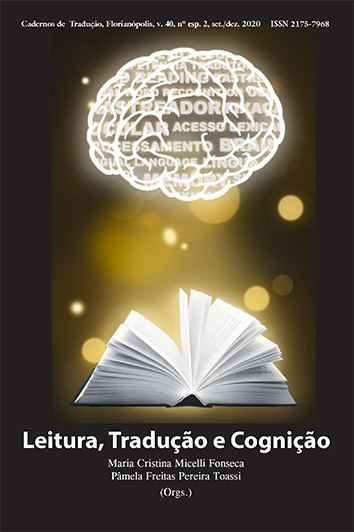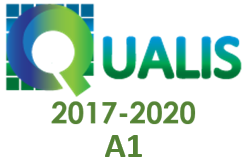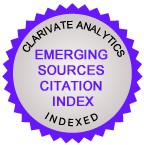Reading in the brain: processes at the word and sentence levels
DOI:
https://doi.org/10.5007/2175-7968.2020v40nesp2p149Keywords:
Políticas Públicas, LGBT, Movimentos Sociais, Projetos Políticos, Projeto Autoritário.Abstract
This article presents a literature review on reading in the brain with a focus on the comprehension of words and sentences. It is part of Bailer’s thesis (b), which aimed at investigating the brains of Brazilian Portuguese monolinguals and Brazilian-Portuguese and English bilinguals and their neuroanatomical response to the processing of written sentences. In this article, empirical behavioral and neuroimaging studies on reading processes at the word and sentence levels are presented, as well as the reading models by Kintsch and van Dijk, van Dijk and Kintsch, and Gagné, Yekovich and Yekovich that describe the whole reading process, from words to discourse. In addition, we discuss the role of individual differences, especially working memory capacity in reading comprehension. The objective is to describe what happens in the reader’s mind as s/he understands words, sentences, paragraphs and builds significant representations of texts and also to locate the reader in relation to the components that the Bailer’s study (b) dealt with.
References
Alloway, Tracy; Alloway, Ross. The working memory advantage: Train your brain to function stronger, smarter, faster. New York: Simon and Schuster, 2013.
Baddeley, Alan D.; Hitch, Graham J (a). “Working memory”. The Psychology of learning and motivation: Advances in research and theory, Bower, Gordon H. (Ed.). Cambridge: Academic Press. 1974, pp. 47-89.
Baddeley, Alan D. (a). “Working memory”. Science. 255.5044, (1992): 556-559.
Baddeley, Alan D.; Hitch, Graham J (b). “Developments in the concept of working memory”. Neuropsychology. 8.4, (1994): 485-493.
Baddeley, Alan D. (b). “Is working memory still working?”. American psychologist. 56.11, (2001): 851-864.
Baddeley, Alan D. (c). “Working memory: looking back and looking forward”. Neuroscience. 4, (2003): 829-839.
Bailer, Cyntia (a). Working memory capacity and attention to form and meaning in EFL reading. Dissertação de Mestrado em Letras: Inglês e Literatura Correspondente, Pós-Graduação em Inglês, Universidade Federal de Santa Catarina, 2011.
Bailer, Cyntia (b). The neural processing of sentences in bilinguals and monolinguals: an fMRI study of portugues-english bilinguals and portuguese monolinguals reading comprehension effects on brain activation. Tese de Doutorado em Estudos da Linguagem-Inglês, Pós-Graduação em Inglês, Universidade Federal de Santa Catarina, 2016.
Bledowski, Christoph; Rahm, Benjamin; Rowe, James B. “What ‘works’ in working memory? Separate systems for selection and updating of critical information”. The Journal of Neuroscience. 29.43, (2009): 13735-13741.
Bohsali, Anastasia A.; et al. “Broca’s area–thalamic connectivity”. Brain and language. 141, (2015): 80-88.
Bolger, Donald J.; Perfetti, Charles A.; Schneider, Walter. “Cross-cultural effect on the brain revisited: Universal structures plus writing system variation”. Human brain mapping. 25.1, (2005): 92-104.
Buchweitz, Augusto; et al. “Brain activation for reading and listening comprehension: An fMRI study of modality effects and individual differences in language comprehension”. Psychology & neuroscience. 2.2, (2009): 111-123.
Buchweitz, Augusto. Two languages, two input modalities, one brain: An fMRI study of Portuguese-English bilinguals and Portuguese listening and reading comprehension effects on brain activation. Tese de Doutorado, Pós-Graduação em Inglês, Universidade Federal de Santa Catarina, 2006.
Cabeza, Roberto; Nyberg, Lars. “Imaging cognition II: An empirical review of 275 PET and fMRI studies”. Journal of cognitive neuroscience. 12.1, (2000): 1-47.
Cantor, Judy; Engle, Randall W. “Working-memory capacity as long-term memory activation: An individual-differences approach”. Journal of Experimental Psychology: Learning, Memory, and Cognition. 19.5, (1993): 1101-1114.
Chomsky, Noam. “Interpreting the world: language and freedom”. The chomsky reader, Peck, James. (Ed.). New York: Pantheon Books. 1987: 139-156.
Daneman, Meredyth; Carpenter, Patricia A. “Individual differences in working memory and reading”. Journal of Memory and Language. 19.4, (1980): 450-466.
Daneman, Meredyth; Merikle, Philip M. “Working memory and language comprehension: A meta-analysis”. Psychonomic bulletin & review. 3.4, (1996): 422-433.
Davies, Florence. “Studying the reading process: models of reading”. Introducing reading, F. Davies. (Ed.). New York: Penguin Books. 1995, pp. 57-83.
Dehaene, Stanislas (a). Reading in the brain. New York: Viking, 2009.
Dehaene, Stanislas (b). “Os neurônios da leitura - como a ciência explica a nossa capacidade de ler”. Porto Alegre, Penso. (2012): 274-277.
D’Esposito, Mark; et al. “The neural basis of the central executive system of working memory”. Nature. 378.6554, (1995): 279-281.
Frankland, Steven M.; Greene, Joshua D. “An architecture for encoding sentence meaning in left mid-superior temporal cortex”. Proceedings of the National Academy of Sciences. Early edition, 1.6, (2015): 11732-11737.
Frost, Ram; Katz, Leonard; Bentin, Shlomo. “Strategies for visual word recognition and orthographical depth: a multilingual comparison”. Journal of Experimental Psychology: Human Perception and Performance. 13.1, (1987): 104-115.
Gabrieli, John D. E.; Poldrack, Russell A.; Desmond, John E. “The role of left prefrontal cortex in language and memory”. Proceedings of the national Academy of Sciences. 95.3, (1998): 906-913.
Gagné, Ellen. D.; Yekovich, Carol W.; Yekovich, Frank R. The cognitive psychology of school learning. New York: Harper Collins College Publishers, 1993.
Gitelman, Darren R.; et al. “Language network specializations: an analysis with parallel task designs and functional magnetic resonance imaging”. Neuroimage. 26.4, (2005): 975-985.
Glezer, Laurie S.; et al. “Adding words to the brain’s visual dictionary: novel word learning selectively sharpens orthographic representations in the VWFA”. Journal of Neuroscience. 35.12, (2015): 4965-4972.
Hashimoto, Ryuichiro; Sakai, Kuniyoshi L. “Specialization in the left prefrontal cortex for sentence comprehension”. Neuron. 35.3, (2002): 589-597.
Jobard, G.; et al. “The weight of skill: interindividual variability of reading related brain activation patterns in fluent readers”. Journal of Neurolinguistics. 24.1, (2011): 113-132.
Jung-Beeman, Mark. “Bilateral brain processes for comprehending natural language”. Trends in cognitive sciences. 9.11, (2005): 512-518.
Just, Marcel A.; Carpenter, Patricia A. (a). “A theory of reading: From eye fixations to comprehension”. Psychological review. 87.4, (1980): 329-354.
Just, Marcel A.; Carpenter, Patricia A. (b). “A capacity theory of comprehension: individual differences in working memory”. Psychological review. 99.1, (1992): 122-149.
Just, Marcel Adam; et al. “Brain activation modulated by sentence comprehension”. Science. 274.5284, (1996): 114-116.
Kandel, Eric R.; Schwartz, James H.; Jessell, Thomas M. Principles of neural science. Vol. 4. New York: McGraw-Hill. 2000.
Katz, Leonard; Frost, Ram. “The reading process is different for different orthographies: The orthographic depth hypothesis”. Haskins Laboratories Status Report on Speech Research. SR-111/112, (1992): 147-160.
Kintsch, Walter; Van Dijk, Teun A. “Toward a model of text comprehension and production”. Psychological review. 85.5, (1978): 363-394.
Koch, Ingedore Grunfeld Villaça; Travaglia, Luiz Carlos. Texto e coerência. Vol. 4. São Paulo: Cortez Editora, 1989.
Koch, Ingedore Grunfeld Villaça. A coesão textual. São Paulo: Contexto, 1993. Mason, Robert A.; Just, Marcel Adam (a). “Neuroimaging contributions to the understanding of discourse processes”. Handbook of psycholinguistics, Traxler, Matthew and Morton Ann Gernsbacher. (Eds.). Amsterdam: Elsevier. 2006, pp. 765-799.
Mason, Robert A.; Just, Marcel Adam (b). “Lexical ambiguity in sentence comprehension”. Brain research. 1146, (2007): 115-127.
Mazoyer, Bernard M.; et al. “The cortical representation of speech”. Journal of cognitive neuroscience. 5.4, (1993): 467-479.
Mechelli, Andrea; et al. “Differential effects of word length and visual contrast in the fusiform and lingual gyri during”. Proceedings of the Royal Society of London. Series B: Biological Sciences. 267.1455, (2000): 1909-1913.
Newman, Sharlene D.; et al. “Differential effects of syntactic and semantic processing on the subregions of Broca’s area”. Cognitive Brain Research. 16.2, (2003): 297-307.
Paulesu, Eraldo; et al. “A cultural effect on brain function”. Nature neuroscience. 3.1, (2000): 91-95.
Paradis, Michel. A neurolinguistic theory of bilingualism. Vol. 18. Amsterdam: John Benjamins Publishing, 2004. Perani, Daniela. “The neural basis of language talent in bilinguals”. Trends in Cognitive Sciences. 9.5, (2005): 211-213.
Perfetti, Charles A.; Bolger, Donald J. “The brain might read that way”. Scientific studies of reading. 8.3, (2004): 293-304.
Petersen, Steven E.; et al. “Positron emission tomographic studies of the cortical anatomy of single-word processing”. Nature. 331.6157, (1988): 585-589.
Prat, Chantel S.; Just, Marcel Adam. “Exploring the neural dynamics underpinning individual differences in sentence comprehension”. Cerebral cortex. 21.8, (2011): 1747-1760.
Prat, Chantel S.; Mason, Robert A.; Just, Marcel Adam. “Individual differences in the neural basis of causal inferencing”. Brain and language. 116.1, (2011): 1-13.
Price, Cathy J. “The functional anatomy of word comprehension and production”. Trends in cognitive sciences. 2.8, (1998): 281-288.
Downloads
Published
How to Cite
Issue
Section
License
Copyright (c) 2020 Cadernos de Tradução

This work is licensed under a Creative Commons Attribution 4.0 International License.
Copyright Notice
Authors hold the copyright and grant the journal the right for their articles' first publication, being their works simultaneously licensed under the Creative Commons Attribution License (CC BY), which allows the sharing of such works with its authorship acknowledged and its initial publication in this journal.
Authors are allowed to enter into separate additional contractual arrangements for the non-exclusive distribution of the journal's published version of the work (e.g., post it to an institutional repository or as a book chapter, with an acknowledgment of its initial publication in this journal).






















































